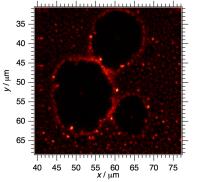Article,
Charge Injection, Carriers Recombination and HOMO Energy Level Relationship in Perovskite Solar Cells
Scientific Reports, 7 (1): 6101-- (2017)
DOI: 10.1038/s41598-017-06245-5
Abstract
We present a comparative study between a series of well-known semiconductor polymers, used in efficient organic solar cells as hole transport materials (HTM), and the state-of-the art material used as hole transport material in perovskite solar cells: the spiro-OMeTAD. The observed differences in solar cell efficiencies are studied in depth using advanced photoinduced spectroscopic techniques under working illumination conditions. We have observed that there is no correlation between the highest occupied molecular orbital (HOMO) energy levels of the organic semiconductors and the measured open-circuit voltage (VOC). For instance, spiro-OMeTAD and P3HT have a comparable HOMO level of ~5.2 eV vs vacuum even though a difference in VOC of around 200 mV is recorded. This difference is in good agreement with the shift observed for the charge vs voltage measurements. Moreover, hole transfer from the perovskite to the HTM, estimated qualitatively from fluorescence quenching and emission lifetime, seems less efficient for the polymeric HTMs. Finally, the recombination currents from all devices were estimated by using the measured charge (calculated using photoinduced differential charging) and the carriers’ lifetime and their value resulted in accordance with the registered short-circuit currents (JSC) at 1 sun.
